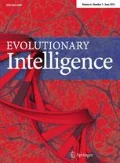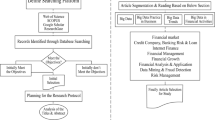Abstract
Trading on major financial markets is typically conducted via electronic order books whose state is visible to market participants in real-time. A significant research literature has emerged concerning order book evolution, focussing on characteristics of the order book such as the time series of trade prices, movements in the bid-ask spread and changes in the depth of the order book at each price point. The latter two items can be characterised as order book shape where the book is viewed as a histogram with the size of the bar at each price point corresponding to the volume of shares demanded or offered for sale at that price. Order book shape is of interest to market participants as it provides insight as to current, and potentially future, market liquidity. Questions such as what shapes are commonly observed in order books and whether order books transition between certain shape patterns over time are of evident interest from both a theoretical and practical standpoint. In this study, using high-frequency equity data from the London Stock Exchange, we apply an unsupervised clustering methodology to determine clusters of common order book shapes, and also attempt to assess the transition probabilities between these clusters. Findings indicate that order books for individual stocks display intraday seasonality, exhibit some common patterns, and that transitions between order book patterns over sequential time periods is not random.






Similar content being viewed by others
References
Al-Suhaibani M, Kryzanowski L (2000) An exploratory analysis of the order book, and order flow and execution on the Saudi stock market. J Bank Finance 24(5):1323–1357
Ben Omrane W, de Bodt E (2007) Using self-organizing maps to adjust for intra-day seasonality. J Bank Finance 31(6):1817–1838
Biais B, Hillion P, Spatt C (1995) An empirical analysis of the limit order book and the order flow in the Paris Bourse. J Finance 50(3):1655–1689
Brabazon A, O’Neill M (2006) Biologically inspired algorithms for financial modeling. Springer, Berlin
Brabazon A, O’Neill M, Dempsey I (2008) An introduction to evolutionary computation in finance. IEEE Comput Intell Mag 3(4):42–55
Brabazon A, O’Neill M, McGarraghy S (2015) Natural computing algorithms. Springer, Berlin
Cai C, Hudson R, Keasey K (2004) Intraday bid-ask spreads, trading volume and volatility: recent empirical evidence from the London stock exchange. J Bus Finance Account 31(5):647–676
Cao C, Hansch O, Wang X (2008) Order placement strategies in a pure limit order book market. J Financ Res 26(2):113–140
Cao C, Hansch O, Wang X (2009) The information content of an open limit order book. J Futur Mark 29(1):16–41
Chen T, Li J, Cai J (2008) Information content of inter-trade time on the Chinese market. Emerg Mark Rev 9(2):174–193
Cho J, Nelling E (2000) The probability of limit-order execution. Financ Anal J 56(5):28–33
Chung K, Van Ness B, Van Ness R (1999) Limit orders and the bid-ask spread. J Financ Econ 53(3):255–287
Deboeck G, Kohonen T (1998) Visual explorations in finance with self-organizing maps. Springer, Berlin
Duong H, Kalev P, Krishnamurti C (2009) Order aggressiveness of institutional and individual investors. Pac Basin Finance J 1(4):1–14
Easley D, Lopez de Prado L, OHara M (2016) Discerning information from trade data. J Financ Econ 120(2):269–285
Goldstein M, Kumar P, Graves F (2014) Computerized and high frequency trading. Financ Rev 48(2):177–202
Gould M, Bonart J (2015) Queue Imbalance as a one-tick-ahead Price Predictor in a limit Order book. arXiv:1512.03492
Griffiths M, Smith B, Turnbull D, White R (2000) The costs and determinants of order aggressiveness. J Financ Econ 56(1):65–88
Gurney K (1997) An introduction to neural networks. University College London Press, London
Hall A, Hautsch N (2006) Order aggressiveness and order book dynamics. Empir Econ 30(1):973–1005
Harris L, Hasbrouck J (1996) Market versus limit orders—the superDOT evidence on order submission strategy. J Financ Quant Anal 31(2):213–231
Kohonen T (1982) Self-organized formation of topologically correct feature maps. Biol Cybern 43:59–69
Kohonen T (1990) The self-organizing map. Proc IEEE 78(9):1464–1480
Kohonen T (1998) The SOM methodology. In: Deboeck G, Kohonen T (eds) Visual explorations in finance with self-organizing maps. Springer, Berlin, pp 159–167
Kohonen T (2000) Self-organizing maps. Springer, Berlin
Lee Y, Fok R, Liu Y (2001) Explaining intraday pattern of trading volume from the order flow data. J Bus Finance Account 28(3):199–230
Lo A, MacKinlay A, Zhang J (2002) Econometric models of limit-order executions. J Financ Econ 65(1):31–71
Lo I, Sapp S (2010) Order aggressiveness and quantity: how are they determined in a limit order market? J Int Financ Mark Inst Money 20(3):223–243
Moreno D, Marco P, Olmeda I (2006) Self-organising maps could improve the classification of the Spanish mutual fund industry. Eur J Oper Res 174(2):1039–1054
O’Hara M (1995) Market microstructure theory. Blackwell, Oxford
O’Hara M (2015) High frequency market microstructure. J Financ Econ 116(2):257–270
Omura K, Tanigawa Y, Uno J (2000) Execution probability of limit orders on the Tokyo stock exchange. http://ssrn.com/abstract=252588. Accessed 25 April 2016
Pascual R, Verdas D (2009) What pieces of limit order book information matter in explaining order choice by patient and impatient traders? Quant Finance 9(1):527–545
Pöllä M, Honkela T, Kohonen T (2009) Bibliography of self-organizing map (SOM) papers: 2002–2005 addendum. TKKReports in Information and Computer Science, Helsinki University of Technology, Report TKK-ICS-R24
Ranaldo A (2004) Order aggressiveness in limit order book markets. J Financ Mark 7(1):53–74
Sarlin P, Peltonen T (2013) Mapping the state of financial stability. J Int Financ Mark Inst Money 26:46–76
Verhoeven P, Ching S, Ng H (2004) Determinants of the decision to submit market or limit orders on the ASX. Pac Basin Finance J 12(3):1–18
Wilinski M, Cui W, Brabazon A, Hamill P (2015) An analysis of price impact functions of individual trades on the London Stock Exchange. Quant Finance 15(10):1727–1735
Xu Y (2009) Order aggressiveness on the ASX market. Int J Econ Finance 1(1):51–75
Acknowledgements
This publication has emanated from research conducted with the financial support of Science Foundation Ireland under Grant No. 08/SRC/FM1389. Calculations have been carried out using resources provided by Wroclaw Centre for Networking and Supercomputing (http://wcss.pl), Grant No. 405. The authors would also like to acknowledge the contribution of the anonymous reviewers to the improvement of this paper and the work of Dr Wei Cui on the analysis of the descriptives in Sect. 3.
Author information
Authors and Affiliations
Corresponding author
Rights and permissions
About this article
Cite this article
Brabazon, A., Lipinski, P. & Hamill, P. Characterising order book evolution using self-organising maps. Evol. Intel. 9, 167–179 (2016). https://doi.org/10.1007/s12065-016-0149-y
Received:
Revised:
Accepted:
Published:
Issue Date:
DOI: https://doi.org/10.1007/s12065-016-0149-y




